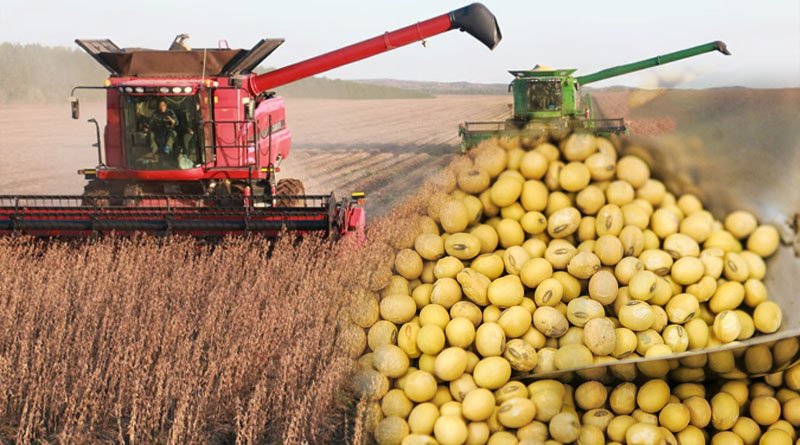A vertical farming system offers a potential solution to these issues by growing crops in vertically stacked layers or on vertical structures.

Soybean is an essential crop worldwide, serving as a primary source of protein for both human and animal consumption. However, soybean production faces several challenges, such as land limitations, water scarcity, and environmental concerns. A vertical farming system offers a potential solution to these issues by growing crops in vertically stacked layers or on vertical structures.
This article aims to explore the potential of vertical farming for soybean production, its benefits, and limitations, and future research directions.
Advantages of Vertical Farming for Soybean Production
Vertical farming has several advantages for soybean production. Firstly, it allows the maximization of space utilization by stacking plants vertically, increasing the number of plants grown in a limited area. This is especially relevant in urban areas where land is scarce and expensive.
Secondly, it reduces water consumption by using recirculating hydroponic or aeroponic systems, which supply the plants with nutrients and water while minimizing waste and runoff. This is important in areas with water scarcity or pollution concerns.
Thirdly, it optimizes the growing environment, such as the light spectrum, intensity, and duration, and the nutrient solution composition, to enhance plant growth and development, resulting in higher yields per unit area.
Challenges of Vertical Farming for Soybean Production
Despite its benefits, soybean production through vertical farming faces several challenges. Firstly, soybean plants have a relatively long growth cycle and require sufficient space, light, and nutrients to grow. Therefore, the vertical farming system must provide the plants with the necessary resources and optimize the environmental conditions for their growth and development.
Secondly, soybeans require specific environmental conditions, such as a particular temperature range and humidity level, to achieve optimal yields.
Therefore, the vertical farming system must be designed to meet these requirements, which may involve using advanced sensors and control systems. Lastly, the vertical farming system for soybean production may require significant capital investment, especially for the high-tech systems that utilize artificial lighting and environmental control.
Experimental Findings on Soybean Production Through Vertical Farming
Several experimental studies have investigated the feasibility and effectiveness of soybean production through vertical farming. For instance, a study by Li et al. (2020) examined the effect of different light spectra on soybean growth and yield in a vertical farming system.
The results showed that red-blue LED lighting promoted soybean growth and increased yield compared to other light spectra. Similarly, a study by Hou et al. (2019) evaluated the effect of nutrient solution composition on soybean growth and yield in a hydroponic vertical farming system.
The results showed that a balanced nutrient solution with appropriate ratios of N, P, and K enhanced soybean growth and yield.
Conclusion
Vertical farming offers a promising approach to address the challenges of limited land availability, water scarcity, and environmental concerns in soybean production. The advantages of vertical farming, such as maximizing space utilization, reducing water consumption, and increasing yield per unit area, make it an attractive option for soybean farmers.
However, the challenges of vertical farming, such as meeting the environmental requirements of soybeans, optimizing the growing environment, and the capital investment required, must be addressed to ensure its feasibility and effectiveness.
Future research can focus on developing more efficient and sustainable vertical farming systems for soybean production and increasing the adoption of this technology by soybean farmers.
References:
Hou, L., Wu, X., Chen, M., Wang, L., Yang, S., & Li, T. (2019). Effects of nutrient solution concentration on growth and yield of soybean in hydroponic vertical farming.